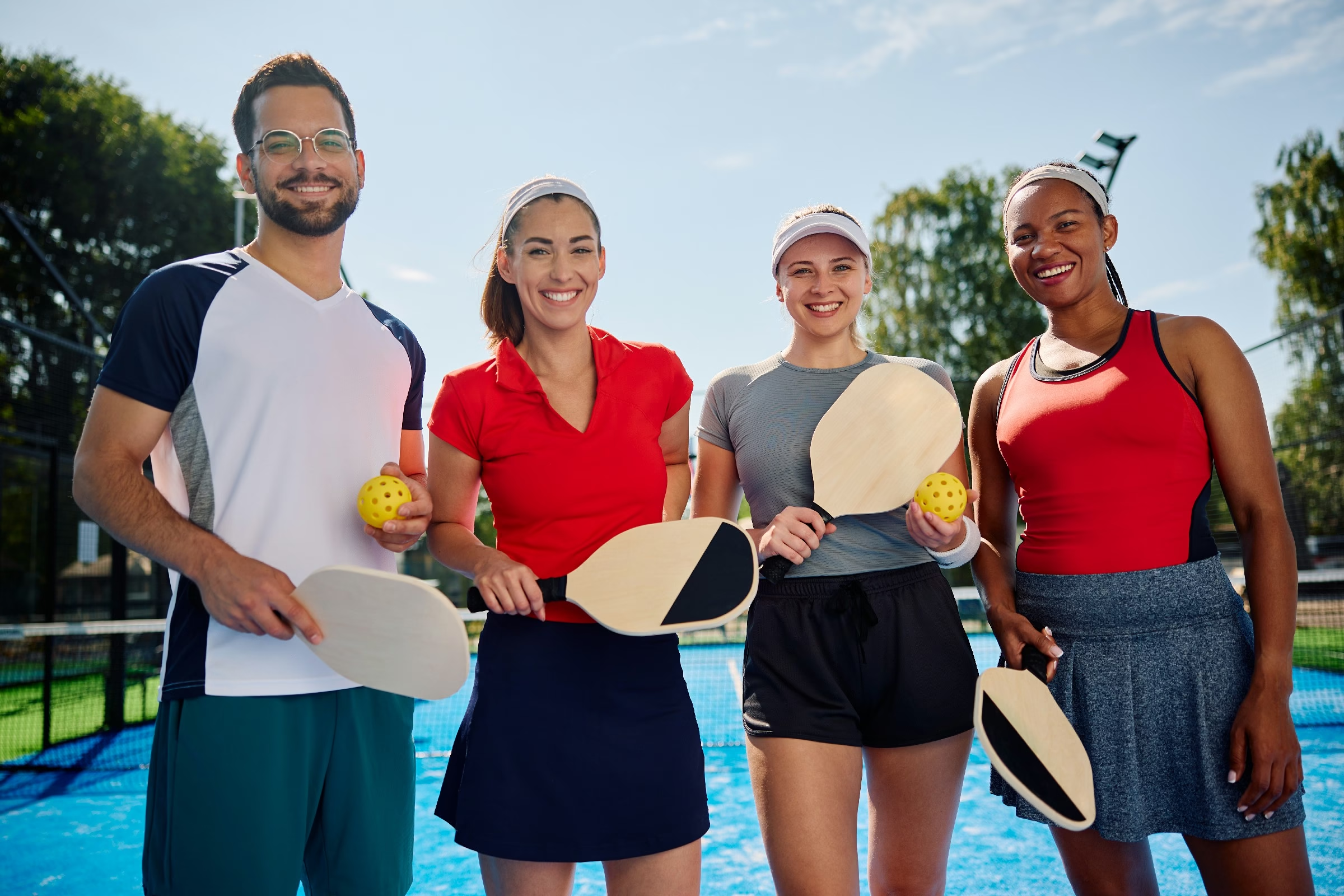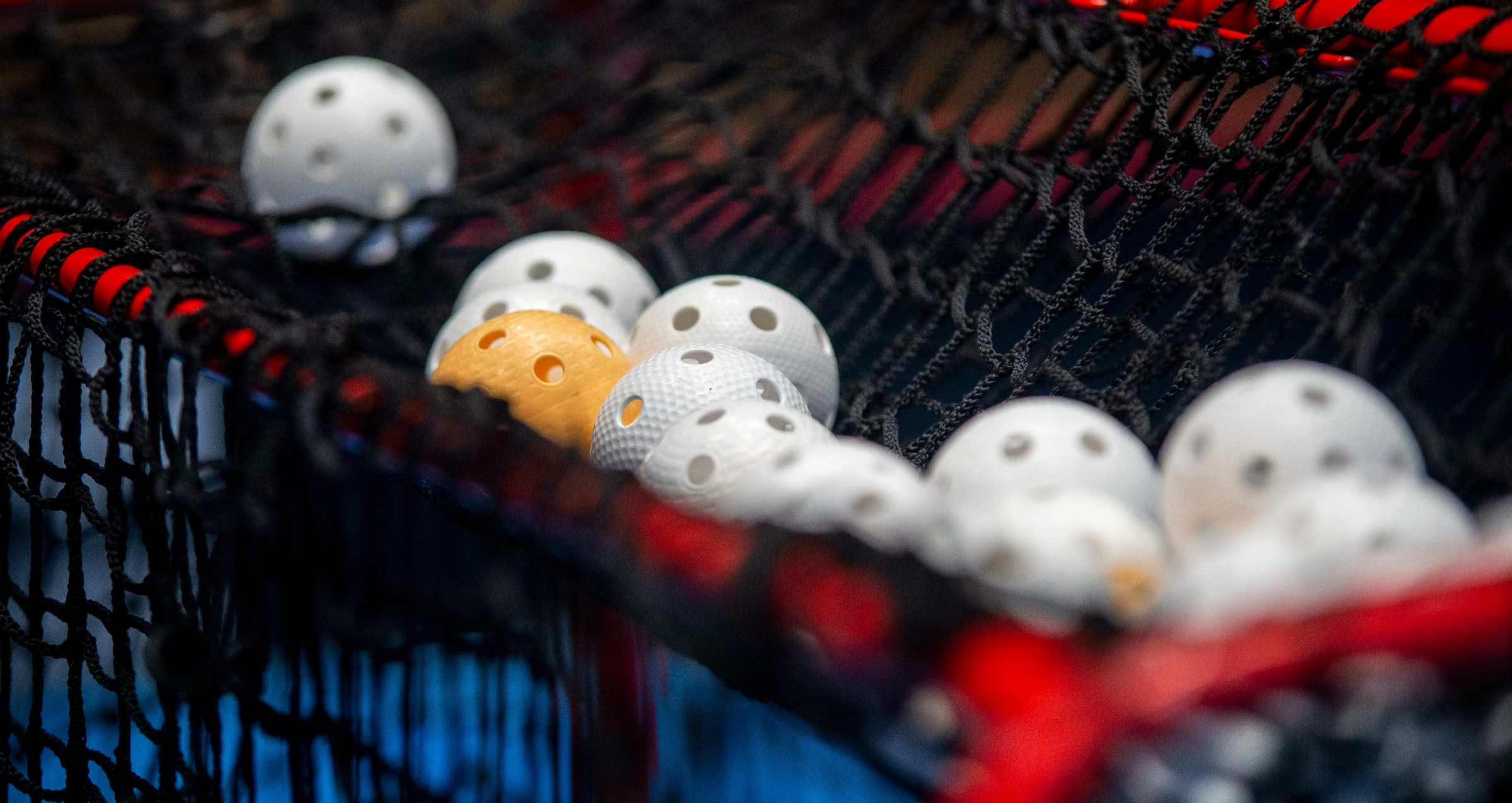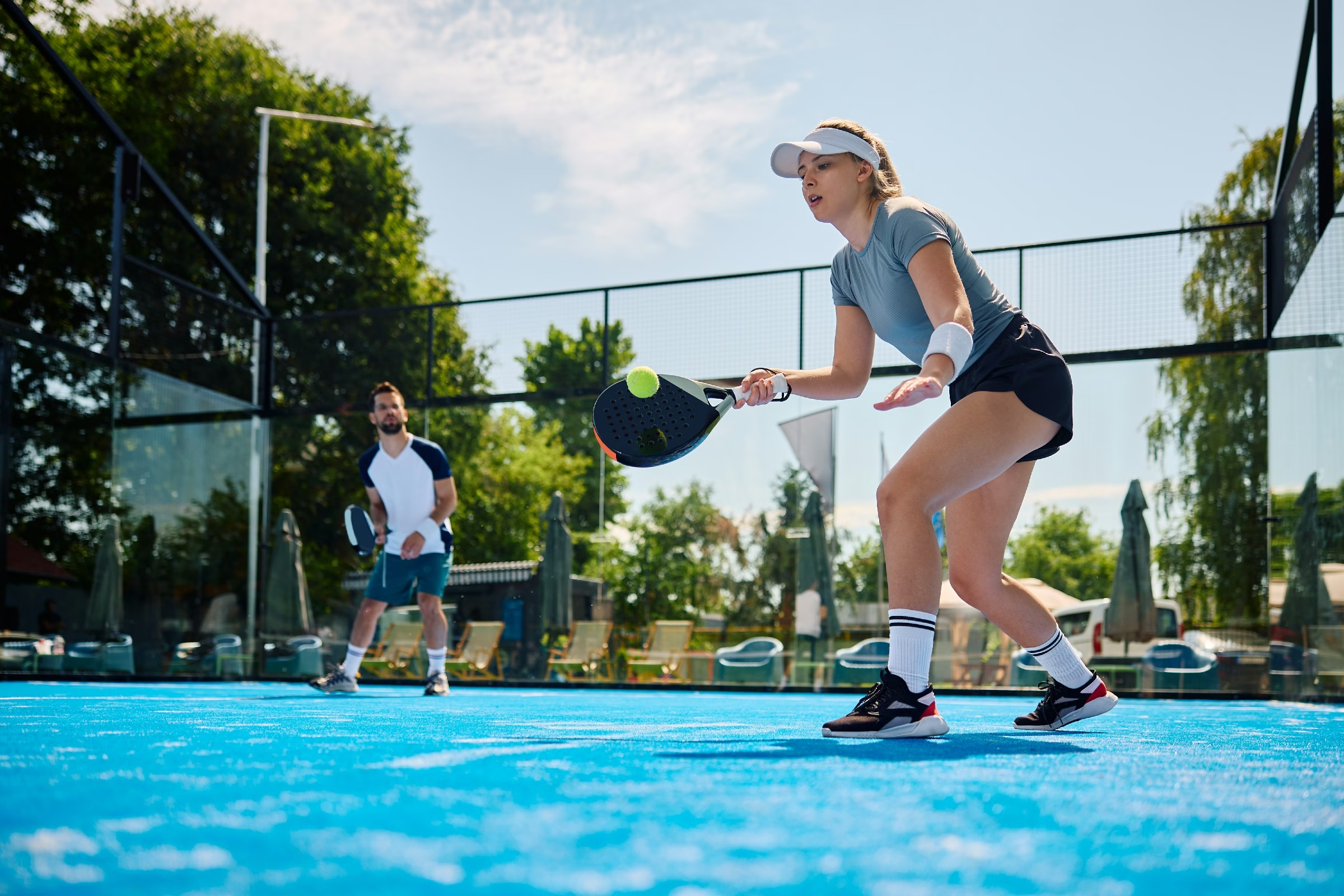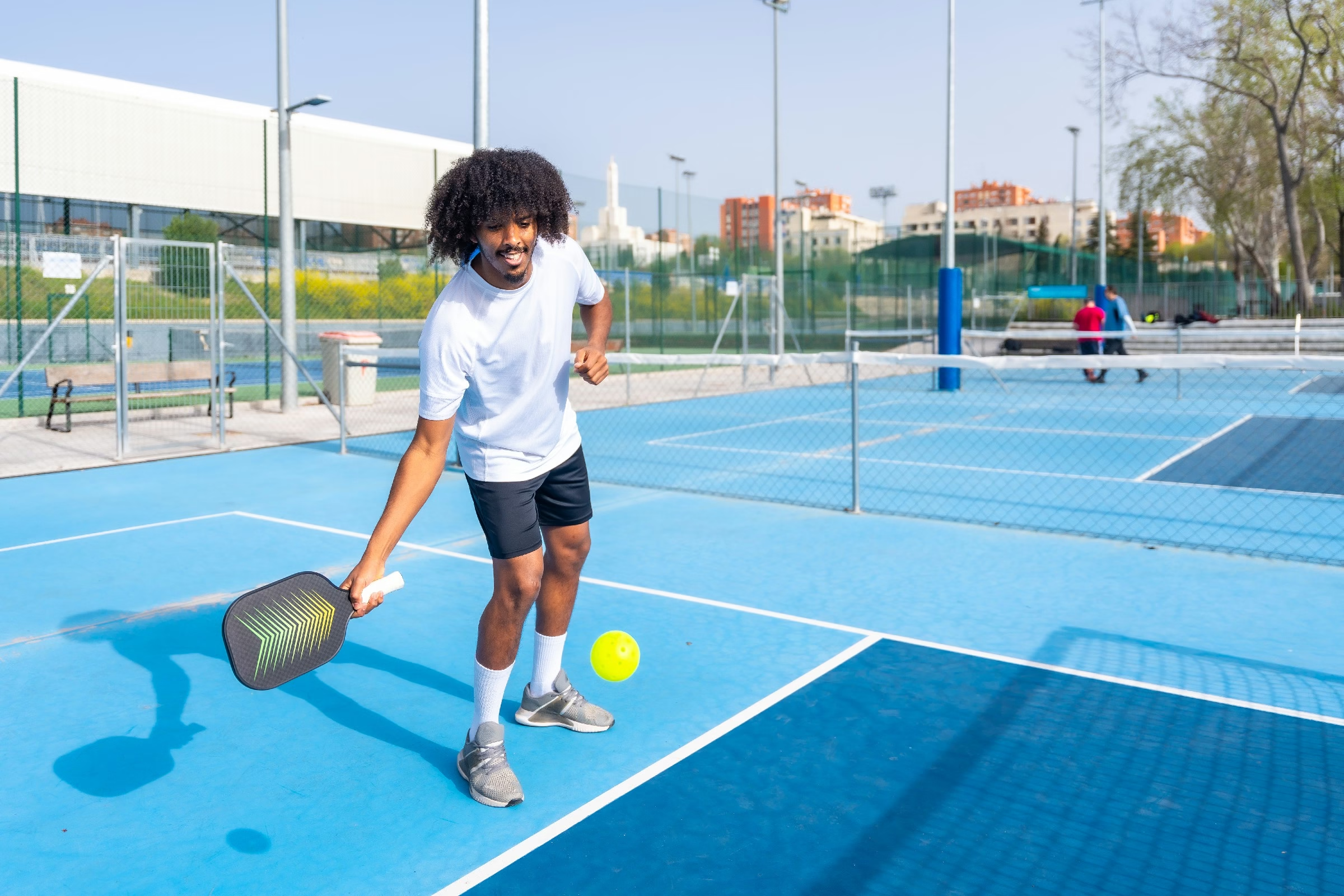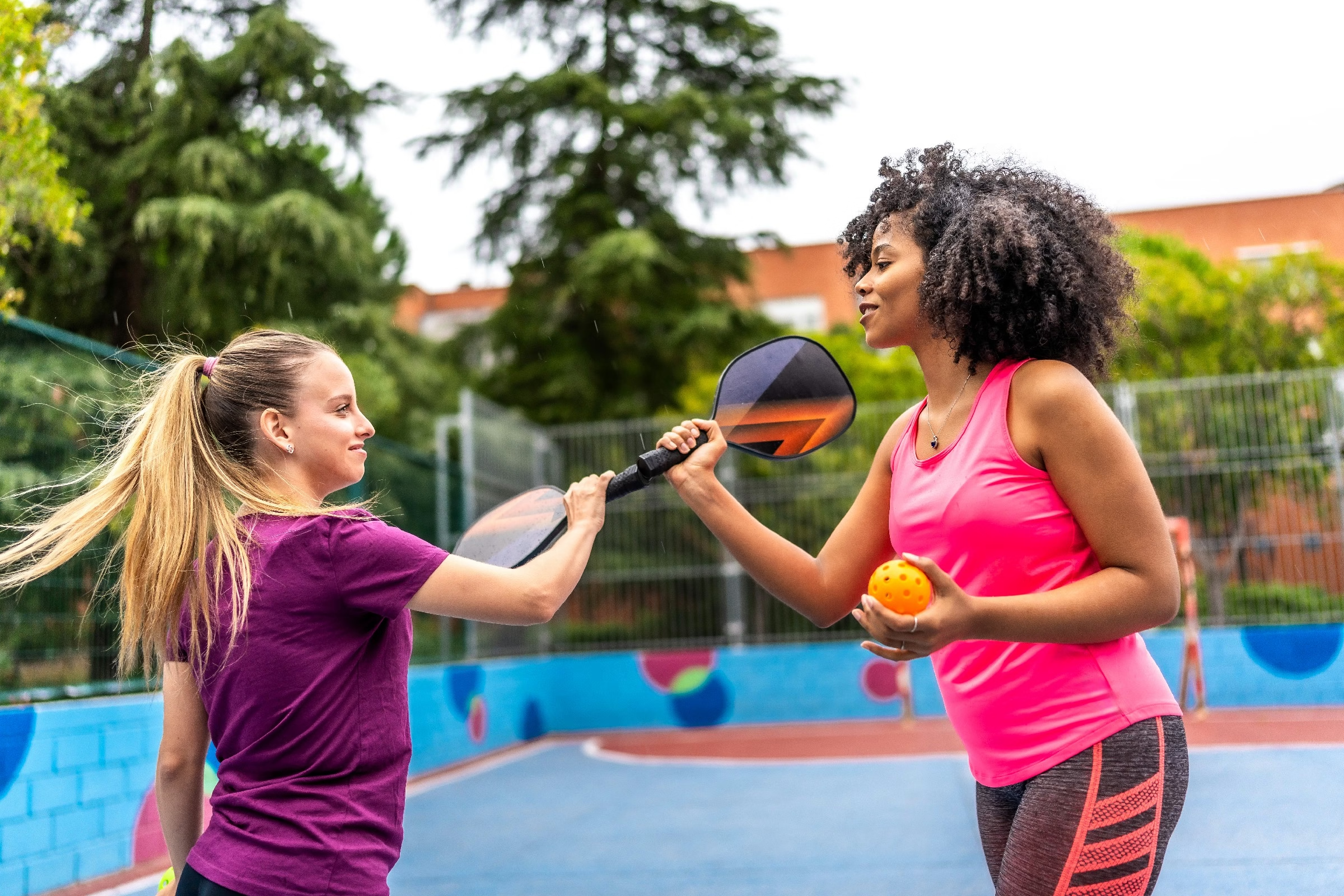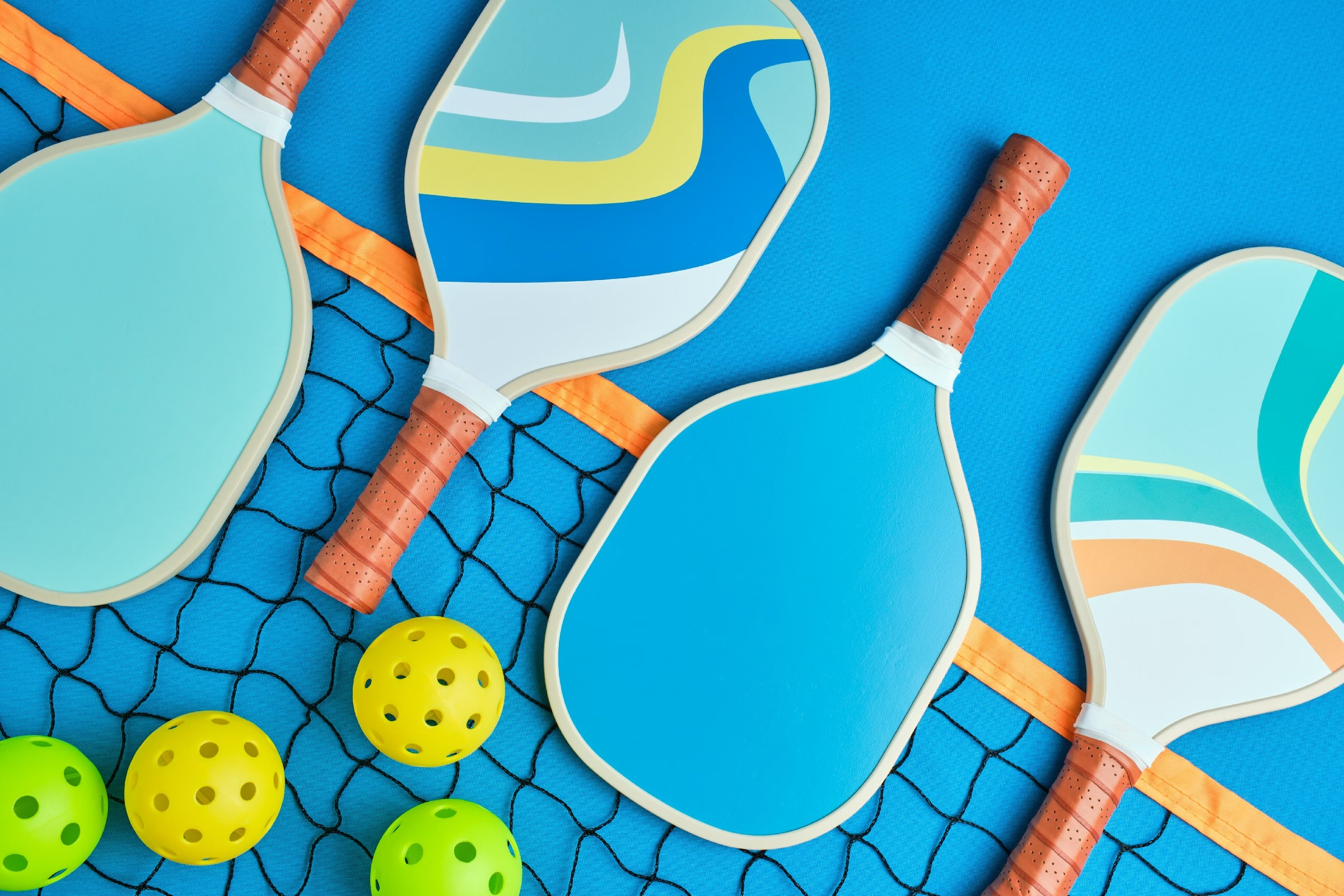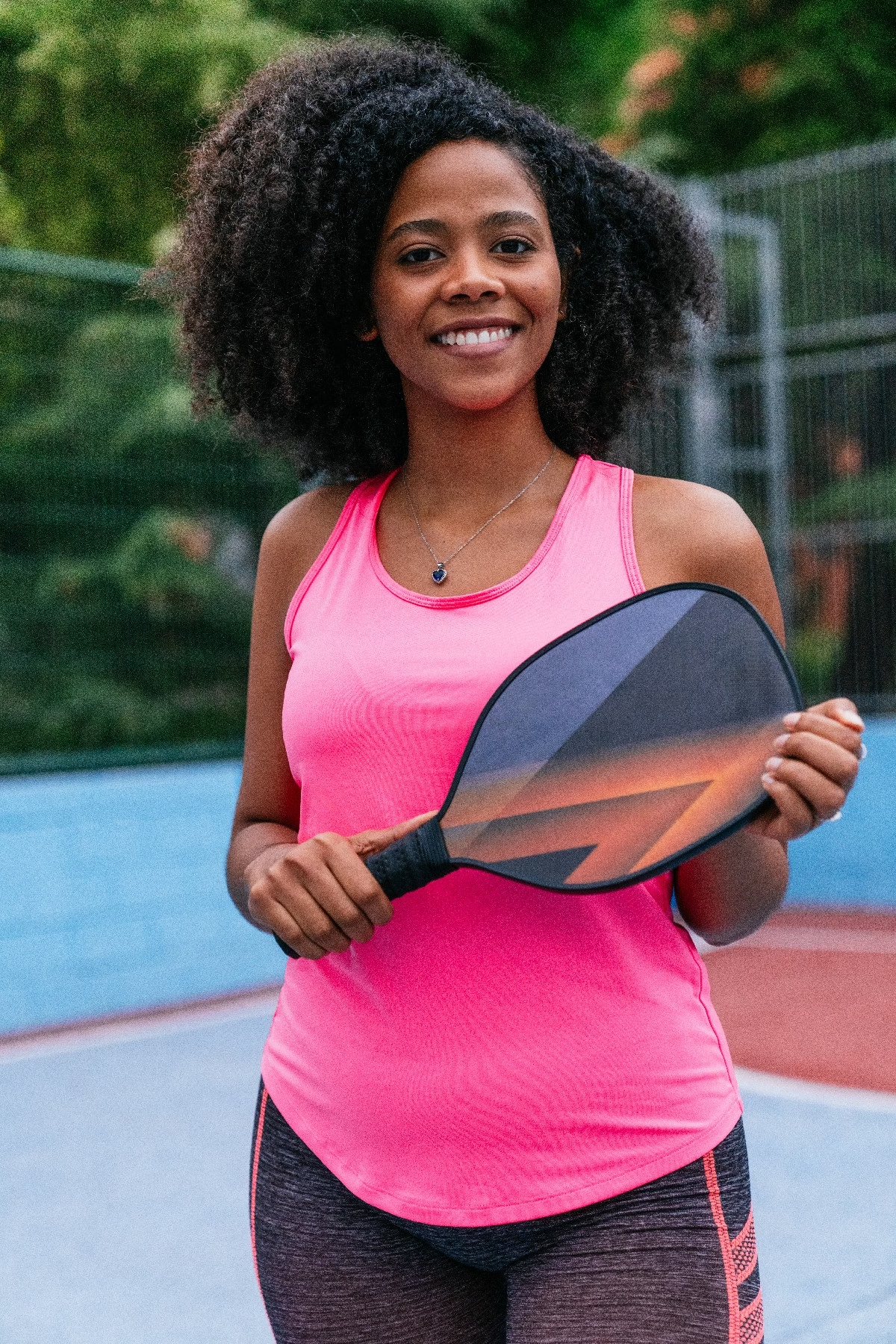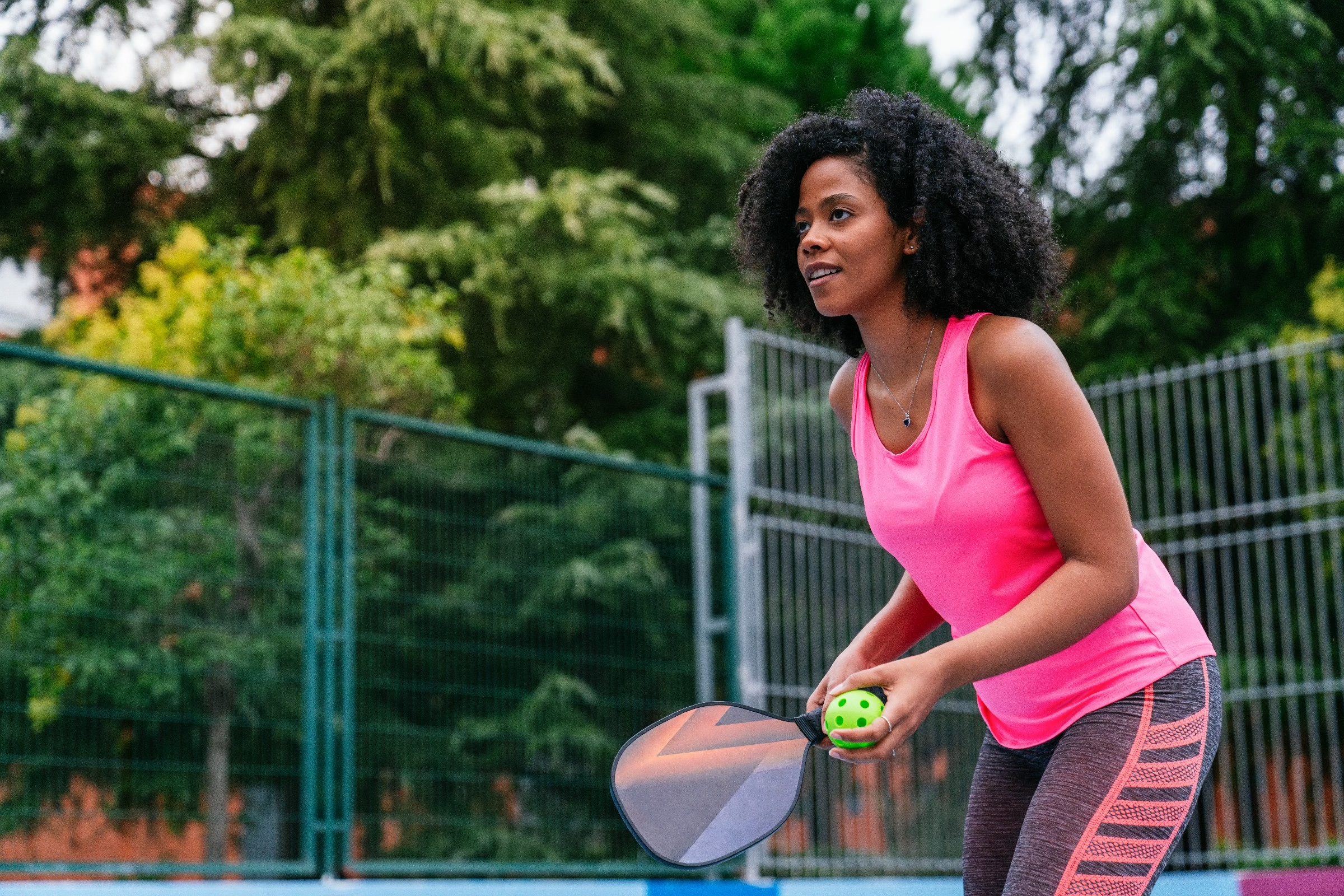Blog
how to make a pickleball paddle
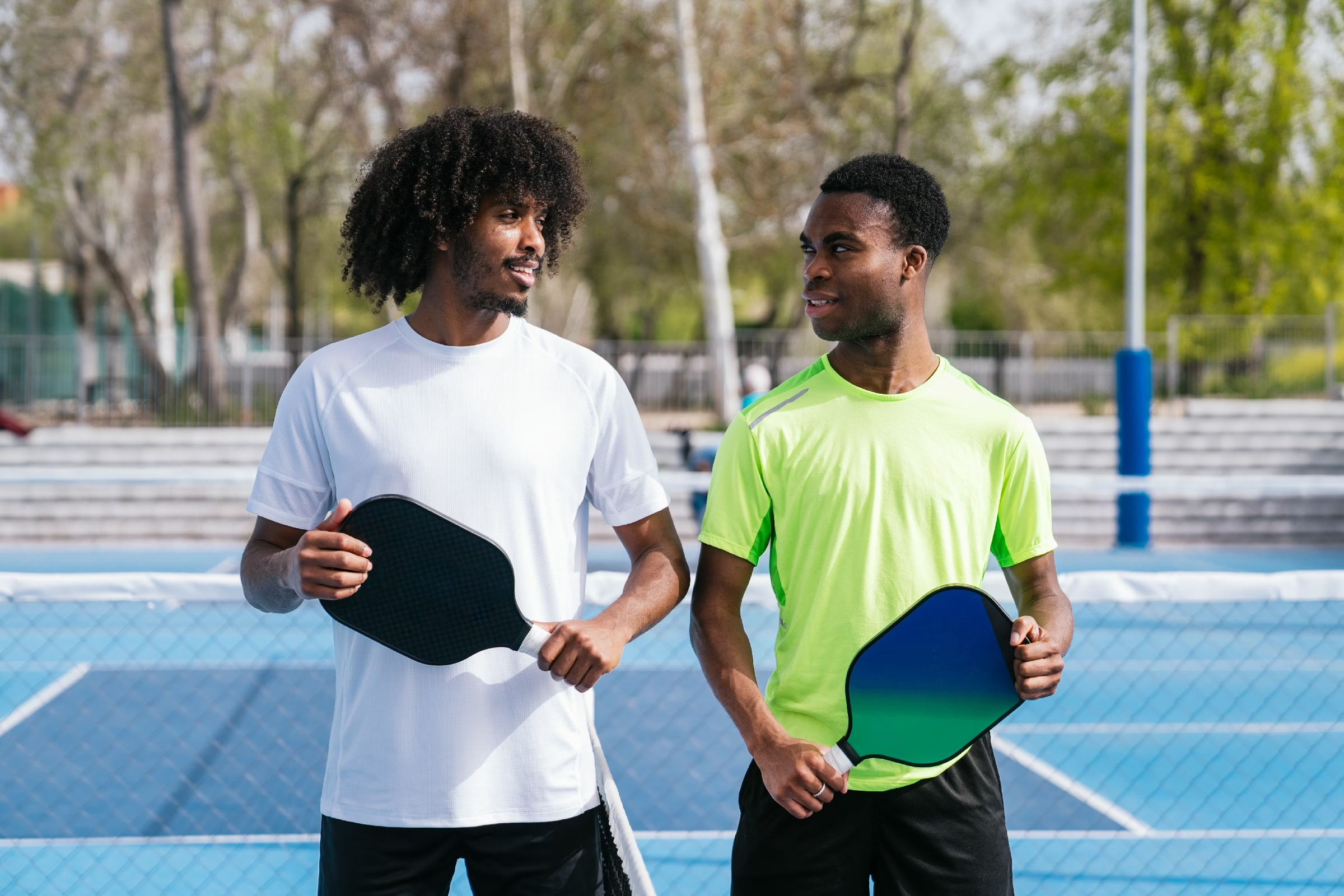
In the sun-drenched courts of community parks and backyard gatherings, pickleball has emerged as a favorite pastime for players of all ages. Enthusiasts revel in the fast-paced nature of the game, which fuses elements of tennis, badminton, and ping pong. But beyond the thrill of the match lies an engaging chance for creativity and craftsmanship: making your own pickleball paddle. Whether you’re looking to personalize your gear or simply dive into a new DIY project, crafting a paddle combines skill, precision, and a touch of artistry. In this article, we will guide you step-by-step through the process of creating a pickleball paddle that reflects your style and enhances your gameplay, ensuring you not only play well but also play with a piece that is uniquely yours.Grab your tools, gather your materials, and let’s get started on this exciting crafting adventure!
Table of Contents
- Choosing the Perfect Materials for Your Custom Pickleball Paddle
- Designing the Optimal Shape and Grip for Comfort and control
- step-by-Step Guide to Crafting the Paddle Core
- Applying the Right surface for Enhanced Performance
- Finishing Touches: Sealing and Personalizing Your Paddle
- Testing and Adjusting Your Paddle for Peak Performance
- Q&A
- To Conclude
Choosing the Perfect Materials for Your Custom Pickleball Paddle
When it comes to crafting a custom pickleball paddle, the choice of materials can significantly impact your performance on the court. Each component of the paddle, from the core to the surface, plays a distinct role in determining the feel, weight, and control of the paddle. Here are some materials to consider:
- Core Materials:
- Polymer Honeycomb: Known for its durability and lightweight characteristics, this material enhances power without sacrificing control.
- Aluminum honeycomb: Offers a unique blend of responsiveness and stability, making it a great choice for players seeking a solid hit.
- Wood: Customary yet effective, wood paddles provide excellent feedback and are often favored by recreational players.
- Face Materials:
- Fiberglass: Flexes well upon impact,which can definitely help generate more power in your shots.
- Carbon Fiber: Lightweight and rigid, carbon fiber offers excellent control and a premium feel, often preferred by competitive players.
- Composite: A mixed material that allows for a customized balance of durability, feel, and power.
selecting the right grip material is also crucial for comfort and performance. Here are some options:
| Grip Material | Benefits |
|---|---|
| Polyurethane | Provides a tacky feel for enhanced grip and control. |
| Leather | Offers durability and a classic look; great for players who prefer a firmer grip. |
| Synthetic Foam | Lightweight and comfortable, ideal for long games without adding fatigue. |
Your paddle should reflect your personal playing style, so consider experimenting with different materials to find the perfect match. Each choice can alter your game experience, helping you achieve that sweet spot of performance and comfort when you’re on the court. take your time to research the various combinations available, listening to feedback from other players and manufacturers, as this will guide you toward your ideal custom paddle.
Designing the Optimal Shape and Grip for Comfort and Control
Creating a pickleball paddle that feels good in the hand and provides optimal control begins with careful consideration of its shape and grip. The paddle’s shape can significantly affect your reach and swing mechanics. A wider paddle offers a larger sweet spot, making it easier for players to hit the ball accurately, while a more elongated shape can provide enhanced reach. When designing, consider the following aspects:
- Blade shape: experiment with different blade widths to find the right balance between power and control.
- Edge guard: A well-designed edge guard can protect the paddle while affecting its overall weight and playability.
- Core structure: Selecting the right core material can enhance performance. For example, polymer core paddles are known for their durability and sound dampening.
The grip of the paddle plays a crucial role in ensuring that players can maintain comfort throughout long matches. A design that allows for customizable grip sizes can cater to a broader audience. Here are key elements to keep in mind:
- Grip circumference: offer multiple grip sizes. A smaller grip allows for quicker wrist movements, while a larger grip provides stability.
- Texture: A textured grip can enhance friction and reduce slippage,particularly in sweaty conditions.
- Material composition: Use materials that provide cushioning and absorb shock, ensuring comfort with every swing.
Testing various shapes and grip combinations can reveal the sweet spot where comfort and control intersect. Collaborating with players to gather feedback can guide your design choices effectively. utilize the following table to keep track of different prototypes and their characteristics:
| Prototype | Shape Type | Grip Size | Material | Player Feedback |
|---|---|---|---|---|
| Proto A | Wide | Medium | Composite | Very Good |
| Proto B | Elongated | Large | Polymer | Acceptable |
| Proto C | Standard | Small | Wood | Excellent |
Step-by-Step Guide to crafting the Paddle Core
To craft the core of your pickleball paddle, start by selecting quality materials. The core largely determines the paddle’s performance, so consider options like:
- Polypropylene honeycomb – known for its lightweight and excellent shock absorption.
- Nomex honeycomb – offers durability and a crisp feel.
- Wood – traditional but can be heavier; great for recreational play.
Once you’ve chosen your material, proceed to cut it into the desired size, typically around 16 x 8 inches for a pickleball paddle. Make sure to create enough depth to form the right shape.You can achieve this by using a jigsaw or circular saw carefully to ensure smooth and even edges. After shaping, sand the edges to remove any rough spots for a more polished finish.
The next step is to assemble the layers of your paddle core. Making a simple layout is essential for a balanced paddle. Consider this structure:
| Layer | Material | Purpose |
|---|---|---|
| 1 | Foam Insert | Shock absorption |
| 2 | Honeycomb Core | Structural stability |
| 3 | Facing Material | Durability and control |
secure the layers together using a strong epoxy adhesive and allow it to cure as per the manufacturer’s instructions.Once cured, you can begin to apply the facing material, which can be a high-quality composite or fiberglass, enhancing the paddle’s resilience and responsiveness during play.
Applying the Right surface for Enhanced Performance
When crafting a pickleball paddle, selecting the appropriate surface material is crucial for maximizing performance. Each type of surface offers unique characteristics that can significantly influence gameplay. Typically,surfaces can range from polymer to fiberglass,and even carbon fiber,each contributing differently to the balance of power,control,and spin.
To help you choose the right surface, consider the following features of common materials:
- Polymer: Known for its durability and consistent performance, it allows for great control and a softer feel.
- Fiberglass: Offers a more powerful responses with a larger sweet spot, ideal for aggressive players.
- Carbon Fiber: Provides excellent stiffness and responsiveness, catering to players who prioritize quick reactions.
Understanding how surface texture affects play is also essential.The finish on the paddle can enhance ball grip, influence spin, and control speed. Here’s a brief comparison of surface textures:
| Texture Type | Effect on Ball Control | Spin Potential |
|---|---|---|
| Smooth | Moderate | low |
| Textured | High | High |
| Rough | Variable | Moderate |
Finishing Touches: Sealing and Personalizing Your Paddle
Once you have constructed your pickleball paddle, the next step is to ensure its longevity and aesthetic appeal by applying a protective seal. Using a high-quality wood finish or sealant not only enhances the wood’s grain but also prevents moisture damage and wear from prolonged use. consider these options for sealing your paddle:
- Polyurethane: Provides a durable,water-resistant finish that is ideal for outdoor play.
- Lacquer: Offers a fast-drying,high-gloss finish that enhances the paddle’s natural beauty.
- Oil-based Finishes: Improves wood appearance while providing a more natural feel in hand.
After the sealing process is complete,it’s time to add a personal touch that reflects your unique style. You can use various methods to personalize your paddle that go beyond just your name. Options include:
- Stickers and Decals: Easy to apply and can be customized with designs or quotes that resonate with you.
- Custom Paint Jobs: For the artistically inclined, hand-painting your paddle can create a one-of-a-kind piece.
- Engraving: This durable option allows for deep personalization, making your paddle truly yours.
To further enhance the aesthetic appeal,consider creating unique grip designs that suit your playing style. Experimenting with colors and textures can not only set your paddle apart but also provide better control and comfort. Here’s a simple guide to creating your own grip:
| Grip Material | Benefits | Style Ideas |
|---|---|---|
| Sport Tape | Affordable and customizable | Floral patterns or stripes |
| Rubber Sleeve | Extra cushioning and grip | monochrome with pops of color |
| Fabric Wrap | Soft and highly customizable | Embroidered designs or art prints |
Testing and Adjusting Your Paddle for Peak performance
Once you’ve crafted your paddle, it’s crucial to fine-tune it to suit your playing style and optimize your performance on the court. Begin by assessing the grip size and feel; a proper grip ensures better control and reduced risk of injury. Experiment with different grip tapes to find the one that offers the best comfort and traction. Here are some factors to consider when testing your paddle’s grip:
- Grip size: Ensure it fits snugly, not too tight or too loose.
- material: Choose between rubber, cushioned, or textured grips.
- Wrap Techniques: Experiment with various techniques to enhance comfort.
Next, you’ll want to evaluate the paddle’s weight and balance.The distribution of weight can significantly impact your swing speed and control. A heavier paddle often provides more power but can tire your arm more quickly, while a lighter model allows for faster maneuvers but may lack in stability. Test different weights to find a balance that feels right for your game:
| Paddle Weight | Advantages | Disadvantages |
|---|---|---|
| Lightweight (6-7 oz) | Enhanced maneuverability | Less power in shots |
| Medium (7-8 oz) | Balanced feel, versatile | Can be a compromise |
| Heavy (8-9 oz) | Powerful shots | Slower reactions |
playtest your paddle in various conditions to see how it holds up during different types of shots and competitive play. Pay attention to the sound of impact and the feedback it provides. A satisfying thwack frequently enough means good energy transfer. Also, consider adjusting the paddle’s surface texture by adding or modifying edge guards for better spin and control. Experimenting with these aspects not only enhances your paddle’s performance but also allows you to adapt it to the subtle changes in your playing style over time.
Q&A
Q&A: How to Make a Pickleball Paddle
Q1: What materials do I need to make a pickleball paddle?
A1: To craft your own pickleball paddle, you’ll need a sturdy core material, frequently enough plywood or composite materials, for durability. You’ll also require a handle (which can be made from wood or a rubber grip),a protective edge banding,and a strong adhesive. If you want to add some flair, consider paint or decals for decoration!
Q2: What is the first step in making a pickleball paddle?
A2: Start by determining the desired dimensions of your paddle. The standard size is around 15.5 inches long and 7.5 inches wide. Once you have your measurements, use these to cut your core material accordingly. Precision is key here for optimal performance during gameplay.
Q3: How do I create the paddle’s shape?
A3: After cutting the core, it’s time to shape the paddle! You can use a jigsaw or a bandsaw to create a rounded edge, which is standard for pickleball paddles. Take your time and ensure that the shape is symmetrical; this contributes to balance and control during play.
Q4: What’s the process for adding the handle?
A4: to attach the handle, first cut out a slot in the bottom of your paddle’s core to fit the handle snugly.Use a strong adhesive to secure the handle in place and allow it to dry completely.For added comfort,wrap the handle with grip tape or a rubber grip.
Q5: How can I make my paddle last longer?
A5: To protect your paddle from wear and tear, apply edge banding around the perimeter of the paddle. This will act as a safeguard against accidental hits and scrapes.additionally, consider using a protective cover when not in use to keep it free from dust and damage.
Q6: Is it possible to customize the paddle?
A6: Absolutely! Painting or decorating your paddle is a fun way to express your personal style. Just make sure to use non-toxic paint or stickers that will withstand exposure to sweat and humidity during gameplay. Creativity has no bounds when it comes to customizing your paddle!
Q7: Can I make a pickleball paddle without any woodworking experience?
A7: While some woodworking skills can be helpful, making a pickleball paddle can be a straightforward DIY project for beginners. There are plenty of tutorials and guides available online to assist you in each step. Just take your time, follow instructions carefully, and don’t hesitate to ask for help if you need it!
Q8: What are some common mistakes to avoid while making a pickleball paddle?
A8: One of the most common pitfalls is not measuring accurately, which can lead to an imbalanced paddle. Another mistake is rushing the drying time of adhesives, which can compromise the paddle’s integrity. Lastly, ensure proper ventilation if you’re using paints or solvents; safety first!
Q9: Once I have my paddle made, what’s next?
A9: Congratulations on your homemade paddle! The next step is to test it out.Head to your local pickleball court or even a nearby park, and enjoy playing with your handcrafted creation. You might even inspire others to make their own paddles!
—
Whether you’re a seasoned player or a curious novice, building your own pickleball paddle is a rewarding experience. Happy crafting and may your games be filled with fun!
To Conclude
As we conclude our journey through the intricacies of crafting your own pickleball paddle, it’s clear that this DIY endeavor is not just about assembling materials—it’s about embracing a passion for the game and creating a personalized piece that enhances your playing experience. Whether you choose to experiment with different shapes, weights, or grip styles, each paddle you craft becomes a unique extension of your style on the court.
Remember,the joy of making your own paddle lies not only in the final product but in the skills you develop and the creativity you unleash along the way. Now that you’re armed with the knowledge and steps to forge your very own pickleball paddle, it’s time to gather your materials and let your imagination run wild. So grab your tools, channel your inner craftsman, and step onto the court with a paddle that’s not just a tool but a testament to your dedication to the sport. Happy crafting, and may your serves be strong and your volleys precise!

